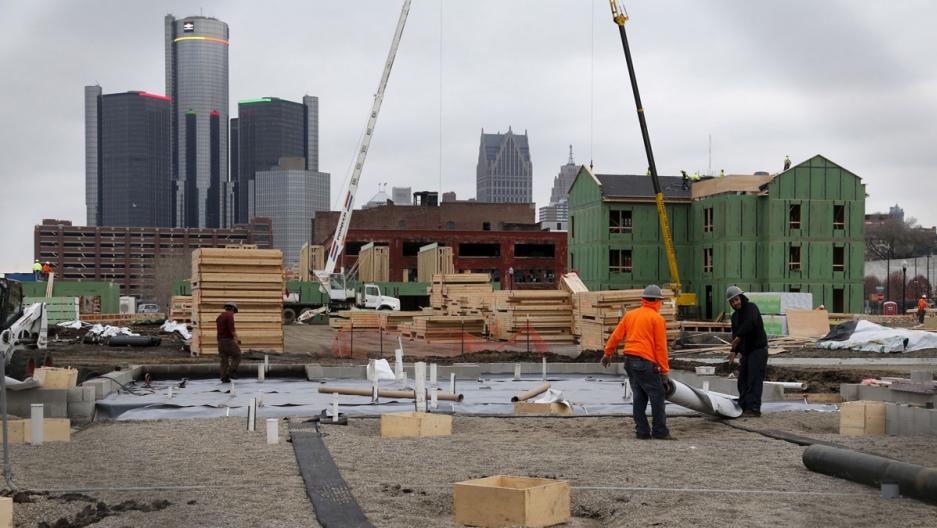Fund managers across the country are engaged and moving quickly to raise capital to invest in opportunity zones.
That much is clear after our joint request for letters of inquiry with the Rockefeller Foundation. We received 141 responses, more than we expected when we issued the call in late June.
Kresge and Rockefeller identify opportunity fund managers for grants and support
I wanted to share a few high-level impressions we extracted from the laborious, but fascinating, process of reading those submissions, which afforded an early, unique window into the level and type of activity that opportunity zones have spurred.
Kresge and Rockefeller are moving forward 20 for further review. In some cases, that will entail our foundations undertaking more intentional due diligence. In others, it will involve connecting those managers to resources designed to help them strengthen their strategy and structure.
Early movers are getting a jump on opportunity zones – and the future of community investing
Usual and unusual suspects. There was a broad diversity among the submissions. Some were familiar – organizations we’ve all worked with in the past, who would be expected to participate in community development programs of significance. Their response was welcome. It is vitally important that as the opportunity zone table is set, we see seated at it managers who understand development in low-income communities and are truly vested in it.
Strikingly, we saw responses from entities wholly unfamiliar to us and – we suspect – new to investing in these spaces. From large corporate banks to managers in small, rural communities, and everything in–between. This seems likely to be an indicator of how the opportunity zone activities will roll out more broadly, with communities of all types lifting projects of all kinds and organizations, funds, and investors of all types.
Six ways to attract capital and shape the future of opportunity zone investing
Uncertainty about who will invest. The applications evidenced a striking uncertainty about who the targeted investors are. These funds clearly will target very wealthy individuals, the rarified stratum of society with the necessary level of capital gains to invest in projects of this complexity and risk.
But few managers were able to paint a clear picture of exactly who the actual investors will be, what they’ll be looking for as they consider funds, and what they will expect in terms of return. This is perhaps because opportunity zones are still in the earliest stages or because of a tempering uncertainty borne from the still un-released Treasury guidance.
Uneven regional representation. Although the applicants came from a wide swath of the country, there was a predictable clumping. Lots from coastal cities and urban centers. A high level of interest from the Southwest. Few from the Deep South or Appalachia.
Real estate funds move into opportunity zones, raising concerns about displacement
Real estate is king: It was no surprise that most asset managers focused on real estate, the traditional focus of the nation’s community development sector. On one hand, this is not a bad thing – most of the communities in opportunity zones need this type of development. On the other hand, this was not the fundamental intent of the legislation, which placed high emphasis on financing for operating businesses, venture, and private equity. This is something to which Kresge, Rockefeller, and the U.S. Impact Investing Alliance might pay attention: whether it is possible to signal affirm the viability and desirability of non-real estate investments.
Measurement is murky. The OZ legislation, as written, carries no requirements for measuring success. That is a major shortcoming; it seems only reasonable to want to know that these tax preferences are generating certain kinds of enduring community benefits. The Kresge-Rockefeller request for inquiries accordingly placed an emphasis on managers articulating how their funds would benefit communities and how they will know whether they’ve met their mark. And yet, the responses we received contained precious little of this kind of impact analysis and metrics; more often, the managers focused on readily quantifiable outputs, such as units of affordable housing produced or jobs created. Not a complete loss leader – but neither is it fully adequate.
Which way to the exit? Finally, managers had few theories about how or when they expect investors to exit funds. And when we say few, we mean . . . none.
We’ll all look forward to seeing how the opportunity zone regulations unfold, which is another data point in how this effort may shape.
How opportunity zones can expand access to fresh food in America’s food deserts
We hope that the Kresge-Rockefeller initiative can be an early contribution to defining, in whatever small way, how society might optimize the potential benefits of these potentially billions of dollars of capital gains landing in our most disinvested communities.











